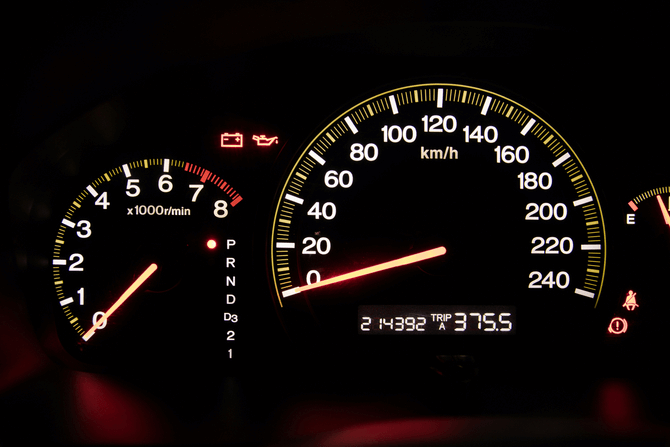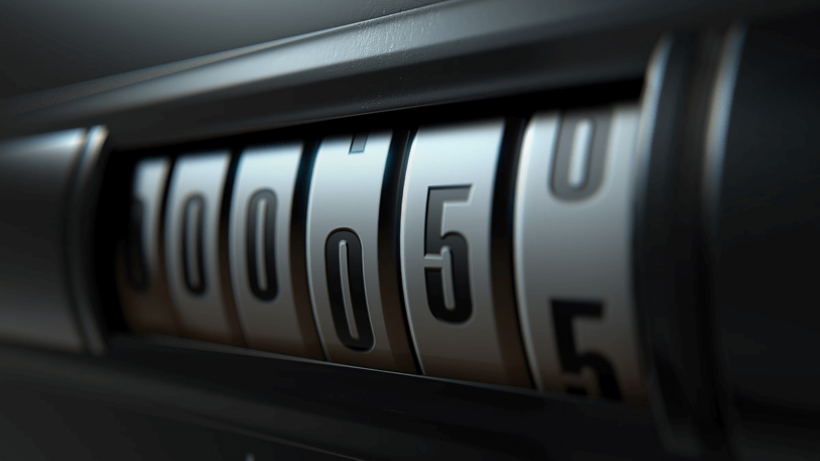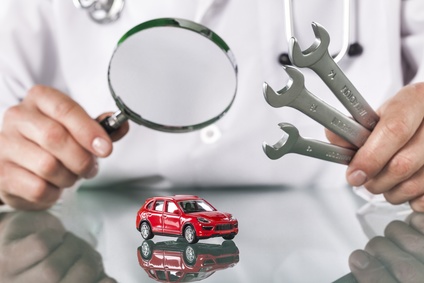Buying a used car can be a smart choice and help you save lots of money. However, odometer tampering, which makes the car’s mileage appear less than it is, can be a big concern. This tampering allows scammers to set a higher vehicle cost and can make buyers pay too much or end up with a car that has hidden problems due to its age. That is why car enthusiasts should know if the odometer is tampered with before buying a used vehicle.
You should know how to check a mileage discrepancy and avoid fraud on the second-hand vehicle market. With ClearVin, you can easily obtain a comprehensive vehicle history review, which includes an odometer report. Be prepared and make informed purchase decisions with our VIN lookup tool, which allows you to uncover the car’s specs and background in a few seconds.
At the same time, motorists should be aware of some nuances about used vehicle mileage. Let’s discuss key points regarding odometer tampering that will be useful for drivers and vehicle owners.
What Is the Odometer Reading and Why Is It So Important?

The odometer reading is one of the most essential vehicle parameters because it displays the total distance traveled by a car. You can find it located on the dashboard or instrument cluster, providing drivers with a means to track their mileage accurately. The odometer reading is usually measured in miles or kilometers, depending on the country.
With the help of an odometer reading, you can track a vehicle’s mileage, which is displayed on the dashboard. It helps assess wear and tear, with higher readings indicating more use and potential maintenance needs. Lower readings suggest less wear and, potentially, a higher car value. It also reveals a vehicle’s usage history, like whether it has been used for long trips or short commutes in a city, affecting the car’s technical state.
A correct odometer reading can help you understand the car’s fuel consumption. Calculating fuel efficiency relies on the odometer, helping drivers adjust their driving habits or spot some issues with the engine and fuel system. For example, drivers can determine their vehicle’s average miles per gallon, or liters per 100 kilometers, by analyzing fuel consumption for a certain distance driven. This information can help drivers save money on fuel.
In addition, monitoring the odometer helps in scheduling maintenance tasks like oil and consumable changes, ensuring the vehicle stays in good condition. For example, passenger car manufacturers typically advise changing the engine oil every 6,000 to 9,000 miles (10,000 to 15,000 kilometers).
Last but not least, the odometer reading influences the overall vehicle value. As mileage increases, a vehicle’s value generally decreases, impacting lease or finance agreements. That is why we always recommend revealing the correct odometer reading with ClearVin by obtaining a comprehensive vehicle history report.
Overall, the odometer reading plays a vital role in informed decision-making on the second-hand vehicle market.
How to Know If the Odometer Is Tampered

It may be challenging to determine odometer tampering without special equipment. However, there are a few indirect signs you can look for to determine tampering.
First, assess the condition of the interior, particularly the scuffs on the armrests, steering wheel, seats, door handles, gear shift knob, and dashboard buttons. As a rule, leather seats and other elements have tears or holes with a mileage of 125,000 miles (200,000 kilometers) or more.
At low odometer readings, the pads on the gas and brake pedals cannot be worn to their metal bases. Noticeable wear of the pedal pads occurs only after 50,000–60,000 miles (80,000–100,000 kilometers). So, if the pads are worn out and the mileage is far less than 50,000 miles, the odometer was obviously tampered with.
You can also spot the car odometer tampering by the signs of severe brake disc wear. Usually, they serve for 40,000–50,000 miles (60,000–80,000 kilometers). If you see new brake discs and the odometer has less than 40,000 miles, this should be suspicious. Also, cloudy headlights, small chips on the hood, and any chrome parts indicate that the car has been driven a lot.
The condition of the parts under the hood is also an indicator. The timing belt should be changed no later than 100,000 kilometers on the odometer. Frequently, technicians forget to remove the oil change tags from the engine during maintenance, which include the latest mileage data. You can find this information in the service book under the last maintenance entry. If the odometer reading hasn’t increased or decreased since the previous one, everything is fine.
The easiest way to get the last reported odometer reading is to use our VIN lookup services and obtain a vehicle history report. Our information is based on the DMV records and a few other reliable and official data sources. That is why you can be sure ClearVin provides you with relevant and accurate vehicle details available in the US databases.
Can a Digital Odometer Be Tampered With?

You may ask whether digital speedometers are more reliable and how to check digital odometer tampering. Despite the fact that modern gadgets use complex software to control mileage, they are even easier to tamper with.
There are a lot of software solutions available that allow for illegal digital odometer tampering. Fraudsters may use specialized computer tools or devices that allow access to the vehicle’s internal system, enabling them to reprogram the odometer’s data. However, these actions are easy to catch. Specialists, particularly professional mechanics, can detect problems with a bit of research and modern software.
How to check digital odometer tampering? When a mechanic connects to the diagnostic port, it is possible to access data like engine temperature, RPMs, engine load, and mileage. If the engine computer has been tampered with, it may be challenging to determine the accurate mileage.
Fortunately, manufacturers are always improving the security of digital odometers to make tampering even harder. To make sure your digital odometer was not tampered with, check the last odometer reading with ClearVin.
How ClearVin Can Help You Get an Odometer Report

As a rule, when a used car gets into an accident or undergoes repairs at a certified car repair shop, the last odometer reading is added to a special DMV database. When a driver applies for used car insurance, the same procedure is conducted.
We at ClearVin have authorized access to the DMV records and can check the odometer reading online. To get the information, simply provide us with the vehicle VIN or make use of our free license plate lookup. You will receive a comprehensive vehicle history report with details such as:
- car specs
- accident history
- ownership history
- car title status
- lien and theft records
- last reported odometer reading
This will help you verify the actual mileage on the title and make more informed car buying decisions. ClearVin is your reliable partner for checking a used car’s history.
Summing Up
Any motorist can face fraud and spot odometer tampering when buying a used car in the US. If you want to check a mileage discrepancy, verify the car’s history, look through maintenance records, and be attentive to signs of wear. Using technology and getting professional inspections can also help ensure the odometer’s accuracy.
To avoid pitfalls and issues when buying a used car, the best solution is to conduct a VIN lookup with our online services. With more than 10 years of expertise, receiving all the needed vehicle data has become as easy as ABC with ClearVin. To find out more, check our resources or contact us online for any questions you may have. Alternatively, you can call us at +1 (844) 268-5991 (8:00 AM–3:00 PM EST, Monday–Friday).









